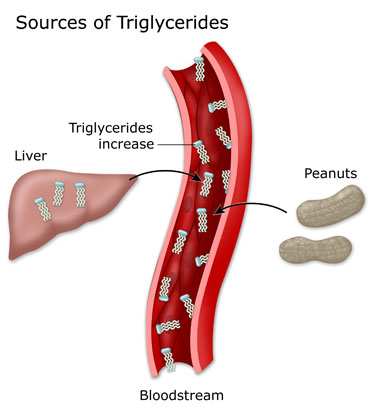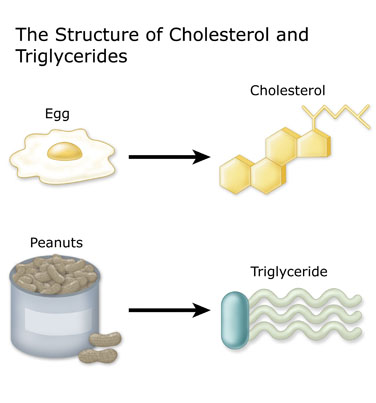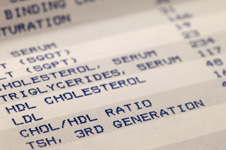Part of understanding your own heart health is knowing your heart health numbers. This includes your blood lipid panel and your blood pressure. But what do all of these numbers mean?
Defining Cholesterol and Triglycerides
First, it helps to understand exactly what blood lipids are. Both cholesterol and triglycerides in the blood are called lipids. When blood lipid levels are high, this is called dyslipidemia.
Cholesterol
Cholesterol is a waxy, fat-like substance that is found in the tissue of humans and other animals. It plays important roles in the body. Our livers produce all the cholesterol that we need for these important functions. We also get cholesterol from the animal foods we eat such as meats, poultry, eggs, and dairy products. High blood cholesterol levels can contribute to atherosclerosis, or clogging of the arteries.

Triglycerides
Triglycerides, or blood fats, are the fats that circulate through the bloodstream along with cholesterol. Your body gets triglycerides from food (especially meats and plant oils) and also makes triglycerides on its own. As with cholesterol, you need just the right amount of triglycerides. High triglyceride levels increase your risk of heart and blood vessel disease.

Cholesterol and triglycerides are both lipids, but have very different shapes. Cholesterol is made up of connected rings of carbon atoms and also is called a “sterol”. Triglycerides are chains of carbons called “fatty acids”, attached at one end to a carbon backbone. We all know that oil doesn’t mix with water! Our blood lipids are just like oil. In order to circulate in the watery blood, these lipids (cholesterol and triglycerides) are packaged along with proteins. These packages are called lipoproteins.

HIGH CHOLESTEROL AND TRIGLYCERIDES PUT YOU AT HIGH RISK FOR HEART DISEASE
What does a blood lipid panel test?
As a person with diabetes, you should have your blood lipids checked once a year, or as advised by your doctor. These are “fasting” tests. This means that you must have your blood drawn only after you have fasted (not eaten anything) for at least 9-12 hours. A blood lipid panel helps detect dyslipidemia.
The blood lipid panel includes 4 main categories of lipid packages (lipoproteins): Total Cholesterol (TC), Low Density Lipoprotein (LDL), High Density Lipoprotein (HDL), and Triglycerides (TG). So what numbers should you aim for?
Here are the basics:
When health care professionals look at the results of a blood test, they want to see a total cholesterol level of 200 mg/dl or less. The total cholesterol is the sum of the cholesterol in LDL, HDL and triglyceride particles.
For LDL, or low-density lipoprotein, a healthy reading for someone with diabetes is 100 mg/dl or less. If you have diabetes and heart disease, the desired number is 70 mg/dl or less. LDL is often called “bad cholesterol”, because it transports cholesterol to cells. And cholesterol from this particle can get deposited in blood vessel walls, causing atherosclerosis.
For HDL, or high-density lipoprotein, a healthy reading for women is 55 mg/dl or more. For men, it is 45 mg/dl or more. HDL is considered the “good cholesterol”, because it is like a garbage collector – this particle picks up cholesterol from blood vessels and other locations, and carries it back to the liver for disposal.
For triglycerides, a healthy reading is 150 mg/dl or less. The triglyceride blood particles carry triglycerides throughout the body: intestines to liver, liver to fat and other cells, fat and other cells back to the liver. A small amount of the triglyceride blood particle (about 1/5 of the triglyceride blood particle) is actually cholesterol. So when triglycerides go up, the total cholesterol also goes up and the reverse – when the triglycerides are lower, the total cholesterol is lower.
Talk with your doctor about your own blood lipid numbers and develop a plan for keeping a healthy heart.
Self-assessment Quiz
Self assessment quizzes are available for topics covered in this website. To find out how much you have learned about Understanding Fats and Oils, take our self assessment quiz when you have completed this section. The quiz is multiple choice. Please choose the single best answer to each question. At the end of the quiz, your score will display. If your score is over 70% correct, you are doing very well. If your score is less than 70%, you can return to this section and review the information.
